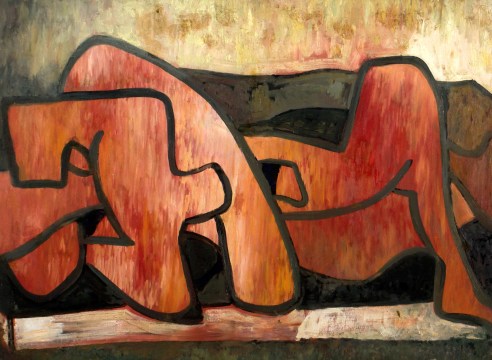
Dubai, UAE – Leila Heller Gallery is pleased to announce an exhibition of the Estate of Jehangir Vazifdar (1920-2011), one of India’s most prolific modern artists, opening on 28 September 2023.
Jehangir Vazifdar was born in Bombay in 1920, into an era where cubism and other defining forces of modernism were shattering the very boundaries of art. He was part of a resplendent period in modern Indian Art. The late 60s and 70s were a time when the Indian sensibility found fresh voice, a time when new styles, techniques and visions came into the arc-light. His work always reflected current ideas, yet remained unique and original. His manner of defining and expanding on art via form, colour, composition and texture proliferated into numerous theories and postulations.
Many people recognize Jehangir Vazifdar as the famous architect who gave the city of Mumbai some of its iconic buildings. However, only a few knew about his true passion for art. He refused to commercialise his art, because of which his works remained hidden for a long time. He was a visionary as much as an artist, who believed that to create something non-existent in nature, one must study the various forms created by nature and use the simplest shapes – straight lines, symmetrical patterns, uniformity of texture and the colour deep black.
His works speak a unique language of colour, which allows people to read his paintings like a book. For example, he associated white with death, black with peace and a combination of the two colours with heaven. He devised languages of colours, while correlating hues with various abstract concepts and emotions. These have been recorded in his unpublished ‘Color Alphabet and Dictionary.’ He dedicated his artistic career to producing works that could not be copied or otherwise forged. His most prized technique, developed after years of experiments, is called ‘Fake-proof’, deriving its name from the fact that it is impossible to copy. This technique can primarily be seen in his portrait works. A combination of horizontal and vertical brush strokes along with thick strokes carved using a foot-rule, is the essence of this process, with colours which are directly applied from tubes on to the canvas.
Amongst collectors of Jehangir Vazifdar’s ouvre, special mention must be made of Abby Grey. An avid lover of Indian art and artists, she visited India frequently in the early sixties. Within a short time, her collection included several luminaries. She met Vazifdar in 1965, and described him as “by far the most astonishing artist” she had met on that trip. Despite his reluctance, she could acquire a single piece of work from him. Decades later, in 2015, the canvas was part of a major retrospective, ‘Abby Grey and Indian modernism’, serving as a vivid motif of a legendary era in Indian Art. Amongst the artists Jehangir Vazifdar showed with are Bhuppen khakkar, Vivasavan, Prabhakar Barwe & SB Palsiker, some legends of the art world.